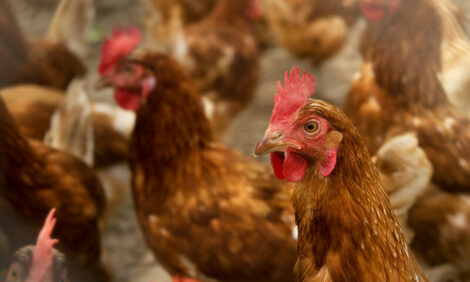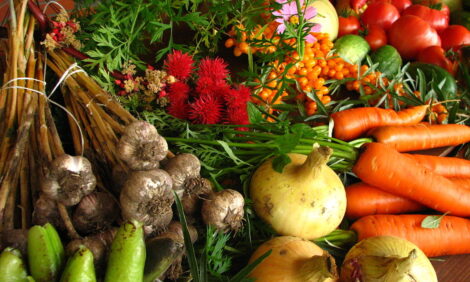



Retailers Make Progress on Campylobacter on Chicken
UK - The latest test results for fresh chicken from the Food Standards Agency (FSA) show a significant reduction in campylobacter contamination from last year.Only 15 per cent of samples, down from 22 per cent in the same period last year (July to September 2014), tested positive for the highest levels of campylobacter contamination. This highest level has more than 1000 colony-forming bacterial units per gram of chicken.
The FSA said these most heavily contaminated birds are the focus of the current target agreed by industry, which is equivalent to no more than 7 per cent of chickens at retail having the highest levels of contamination. Research has shown that reducing the proportion of birds in this category will have the biggest positive impact on public health.
Campylobacter is the most common cause of food poisoning in the UK, making an estimated 280,000 people ill every year.
The results also showed that campylobacter was present on 76 per cent of chicken samples, down from 83 per cent in the same months of last year.
Six per cent of packaging tested positive for the presence of campylobacter, whilst 0.3 per cent of packaging tested positive at the highest band of contamination.
In this first quarter, 1,032 samples of fresh whole chilled UK-produced chickens and packaging have been tested. The chickens were bought from large UK retail outlets and smaller independent stores and butchers. The new survey commenced sampling in July 2015.
Some retailers making more progress than others
As with the previous survey, the data shows variations between the retailers. Testing of chickens from Co-op and Waitrose show both retailers have made the most significant reductions in the proportion of the chickens they sell that are most highly-contaminated.
Waitrose had only 4.1 per cent of samples contaminated at the highest level, whilst Co-op registered at 4.7 per cent.
Waitrose also had the best value for total percentage of samples testing positive for campylobacter, with 59.2 per cent. M&S and Morrisons had the highest percentages of postive samples, at 82.7 and 86.2 per cent respectively.
Steve Wearne, Director of Policy at the FSA said: "It is good to see that some retailers are getting to grips with campylobacter. However, we want to see all of them pulling together to achieve real and lasting reductions.
"I am also pleased that we are starting to see retailers and processors being open with consumers about what they are doing to tackle the problem and about the impact their interventions are having on the chickens they are selling."
British Poultry Council Chairman, John Reed, said: “We are pleased to be seeing progress made after years of effort and the investment of tens of millions of pounds. There is still a lot of work to do but these results show that we are moving in the right direction.”
The BPC has been working closely with regulators and retailers since 2009 to better understand and combat the presence of campylobacter in chickens. This co-operative work is overseen by the Acting on Campylobacter Together (ACT) Board, with representatives from regulators, retailers, and processors.
ACT Board Chairman, Richard MacDonald, said: “Campylobacter remains a very complex bacterium that exists naturally in the environment. We have made great strides in our understanding and the interventions now available extend from farm to fork.
"We are confident that the creativity and innovation being brought to bear will drive further progress.”
The FSA reminded consumers that all chicken is at risk of campylobacter contamination, and good kitchen practices such as not washing chicken and thorough cooking will keep chicken safe to eat.











